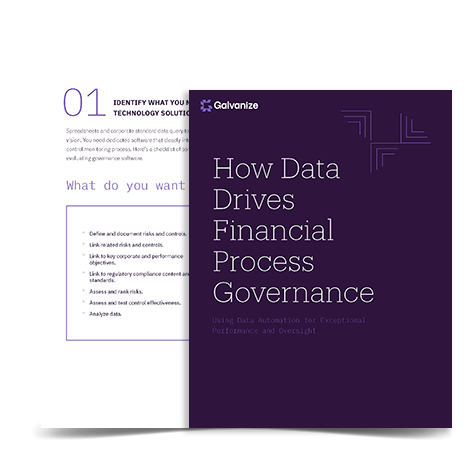Automating repetitive tasks with RPA can up your team’s productivity and improve data accuracy. Find out what tasks you should start automating right away.
If you think of what your finance and accounting teams do each day, you’re probably aware that they excel at more than just data entry and repetitive processing tasks. Because of that, many organizations are increasingly turning to automation to better equip these teams.
According to CFO Magazine, it’s expected that robotics will automate or eliminate up to 40% of transaction accounting work by 2020. It might seem like a threat to some finance jobs, but don’t panic! Robotic process automation (RPA) actually helps finance teams refocus their time and attention on higher-level activities—activities that require professional judgment and human skills, unlike data entry and repetitive processing.
In fact, there are certain finance tasks that just can’t be automated. Things like complex budgeting, taxation, balance sheet reporting, and financial reporting and analysis. All of these tasks require deep interpretation and intense analysis that only people can perform.
“Because the computer is now dealing with the high volumes of routine processing and the people are focused on things that require professional judgment, there’s a good chance the finance teams experience less stress and gain more satisfaction from their jobs.”
The table below shows some of the benefits that can come from implementing RPA.
| Before RPA (Stressful) | After RPA (Less stress, more satisfaction) |
| Data entry errors | Data accuracy |
| Manual tasks managed separately | Centrally managed |
| Different rules applied by people | Consistent rules applied |
| Not easily scalable | Easily and quickly scalable |
| Not easily repeatable | Easily repeatable |
How robotic process automation leads to greater job satisfaction.
Which finance tasks should you automate with RPA?
Many aspects of finance and accounting systems are already automated (e.g., payroll calculations or postings of entries in the general ledger). But there are many activities that currently require human involvement which can also be automated (e.g., procure-to-pay, reconciliations, data input and extraction, etc.).
How do you know if your tasks are a good fit for automation? Essentially, they are:
- Rules-based
- Consistent, with repetitive steps
- Template-driven, with data entered into specific fields.
Thankfully, there’s no shortage of tasks in finance and accounting that fit the above criteria. Some examples of processes you can apply automation to are:
1. Bank reconciliations
Reconciling accounts is an enormous headache for organizations. Robots can go through thousands of transactions per minute, reducing processing times from days to minutes.
2. Contract terms
Some vendor contract data needs to be validated to make sure it’s compliant with contract terms, a tedious process that can be automated by robots.
3. Supplier onboarding
Onboarding new suppliers is a manual and time-consuming process. A robot could easily vet new suppliers with a complete report on things like tax data or credit scores.
4. Price comparisons
A robot can track price fluctuations and changes automatically.
5. Data extraction for accounting close
Journal transactions must be reconciled. A robot can consolidate transactions and reconcile them in your ERP, with minimal human intervention.
RPA can save on valuable time.
Review your processes and determine challenges
The main challenge for any finance organization considering RPA is deciding where to start. To help you get started on your journey to automation, you’ll want to:
1. Build a list of your time-consuming, repetitive tasks
As a first step, we’d suggest a review of all processes involving repetitive human activities in the finance and accounting areas. Begin by identifying all the spreadsheets you use on a daily or weekly basis. Think about how much work is involved in each of the processes.
It’s important to find areas where automation can clearly improvement manual tasks without too much complexity. Often, the return on investment from trying to automate an overly-complex activity just doesn’t make economic sense.
2. Calculate the hours
Now create an estimate of how many hours are spent on the tasks associated with data collection, manual analysis, and troubleshooting data issues.
3. Determine how accurate your data is
Ask yourself how confident you are in the accuracy of the reports based on your data collection and analysis.
4. Think about your challenges
Do you encounter document version issues? Are you meeting management demands? Delivering results on time?
Once you’ve completed the above, it’s time to critically assess your processes, the goals of the finance team, and how those fit with the overall organizational goals. Think about how automation could be applied to which processes and tasks and where it will have the biggest impact.
Now you’ve identified the opportunities and problem areas where automation can help, the next steps will be to start looking for automation solutions/technology, like ACL Robotics.
This blog article is the first in a two-part series about automating finance functions. In the second article we take a look at the typical challenges of implementing increased automation, including change management, team skill sets, securing management support, and data access.
eBook
How Data Drives Financial Process Governance
You’ll learn:
- What the world of a progressive finance leader looks like
- The top pressure points affecting today’s finance teams
- Steps to get started with a technology-driven approach to risk and control monitoring
- Examples of common, high-value, high-performing tests that can be applied in everyday finance process areas.









